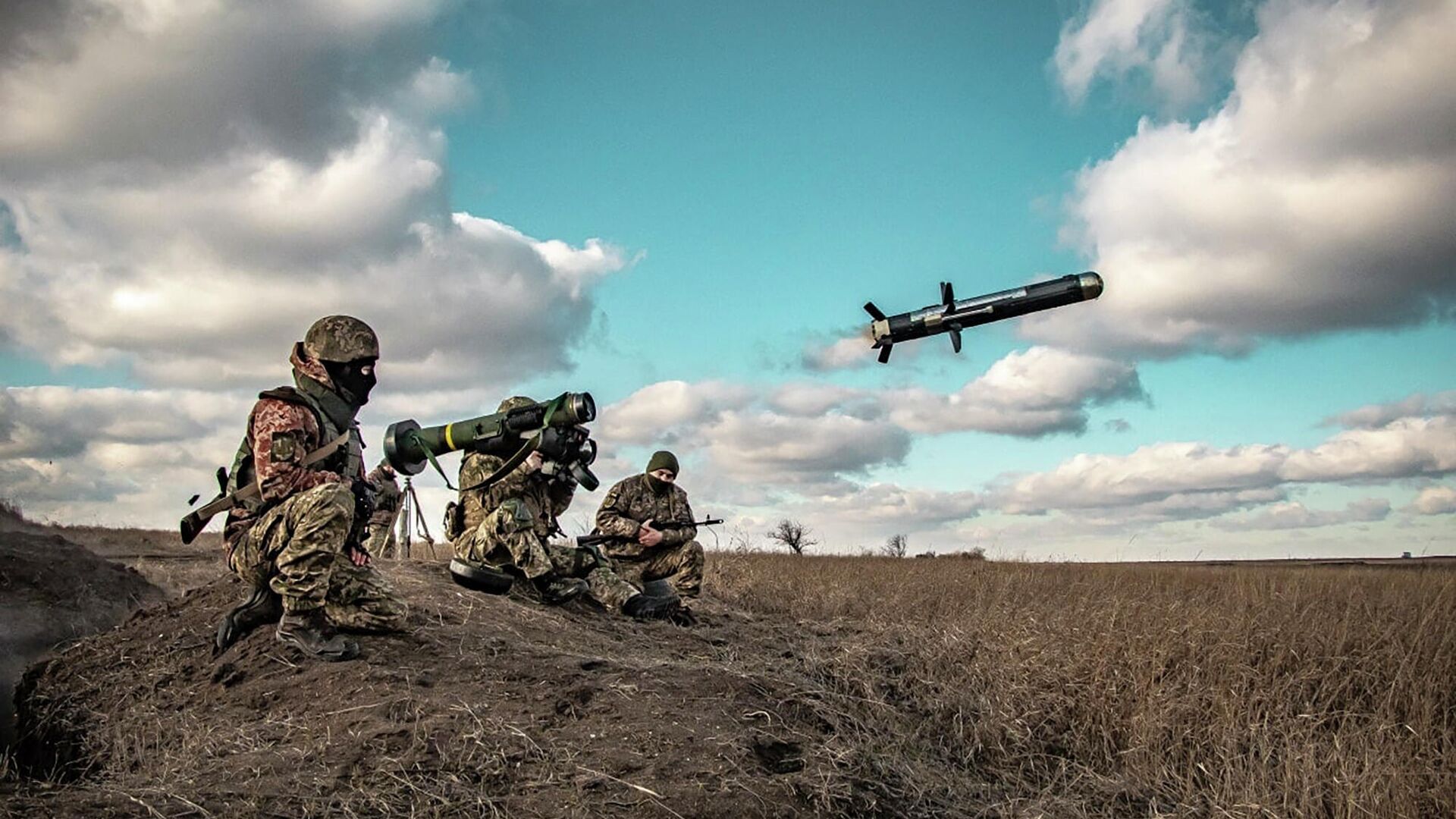US Gives Allies $391 Million to Replace Arms for Ukraine, But Contractors Aren’t Ready to Make Them
19:22 GMT 26.04.2022 (Updated: 16:49 GMT 08.01.2023)

© AP Photo / Ukrainian Defense Ministry Press Service
Subscribe
The US has claimed to provide more than $3.7 billion in aid to Ukraine since Russia launched its special military operation in February.
US State Department spokesperson Ned Price revealed on Monday that of the more than $700 million promised to Ukraine by US leaders, more than half of it will actually go to US allies to help them buy replacements for equipment donated to Ukraine.
When US Secretary of State Antony Blinken and US Defense Secretary Lloyd Austin met with Ukrainian President Volodymyr Zelensky in Kiev on Monday, they promised $713 million in foreign military financing (FMF) for Ukraine and 15 NATO allies. However, headlines around the globe described the deal as “military aid for Ukraine,” failing to mention the other recipients.
Price told reporters later on Monday that Ukraine will only see less than half of that money.
“More than $322 million in this obligation is for Ukraine and will provide support for the capabilities Ukraine needs as Russia’s forces train their focus on the Donbas; this assistance will also help Ukraine’s armed forces transition to more advanced weapons and air defense systems,” Price said.
The other part of that package, $391 million, hints at the reality of the situation: NATO allies have been giving Ukraine their older equipment, some obsolete, some simply Soviet-made, and it’s depleted their own weapons stocks. Because it’s been given via the FMF program, that money can only be used for one thing: to buy American-made weapons to replace them.
“We’re going to push as hard as we can, as quickly as we can to get them what they need. This will be a great topic of conversation for our meeting tomorrow,” Austin said at a press conference with Blinken in Poland after leaving Ukraine. He was scheduled for talks on the topic in Berlin on Tuesday.
The donated Soviet equipment has ranged from S-300 air defense systems to T-72 main battle tanks, Mi-17 helicopters, artillery pieces and ammunition, Dragunov sniper rifles and Strela-2 shoulder-fired anti-air missiles, among other weapons. In addition, the Ukrainians have received Western equipment in the form of Stinger anti-air missiles, a variety of anti-tank recoilless rifles, and several types of drones. A proposal to get Poland and other former Soviet allies to give Ukraine MiG-29 fighter jets failed.
An added benefit of NATO allies switching out their Soviet equipment for US-made weapons is they’ll be more interoperable; the US has long feared some of the more advanced Soviet-made and Russian-made weapons, like the S-400 air defense system bought by Turkey, could expose weaknesses in US-made systems.
However, even the Western-made weapons only exist in limited quantities, and Washington has sent so many to Ukraine in the last two months that its own stocks are beginning to run low. With some of the equipment being decades old, not only are the Ukrainians being given weapons without spare parts, even their makers are struggling to find the parts to build more.
Raytheon CEO Greg Hayes said in a Tuesday briefing that the missile manufacturer had been working with the Pentagon “for the last couple of weeks …. Trying to resource some of the material” to build more Stinger anti-aircraft missiles. The US has sent some 1,400 of them to Ukraine since February.
“Unfortunately, DoD [Department of Defense] hasn’t bought a Stinger in about 18 years. Some of [the] components are no longer commercially available, and so we’re going to have to go out and redesign some of the electronics in the missile of the seeker head. That’s going to take us a little bit of time,” he said..
According to Breaking Defense, it could take two years for Raytheon to increase Stinger production to levels needed to refill US stockpiles.
But it’s not just retooling the assembly line, it’s also retraining the builders: while Raytheon’s advanced cruise missiles are assembled by automated factory lines, the Stinger is largely assembled by hand.
“Transitioning that workforce over to the munitions that are appropriate for the Ukraine fight, that requires some shift of priority and training,” US Deputy Defense Secretary Kathleen Hicks told the outlet earlier this month.
The Javelin anti-tank missile is another major export item to Ukraine, but the challenge for the Pentagon is expanding existing production lines, not restarting them. Raytheon and Lockheed Martin jointly produce about 6,000 Javelins per year - not nearly enough to meet Kiev’s demand of 500 missiles per day, according to CNN.
Russia launched its special military operation in Ukraine on February 24, aiming to neutralize the country, which has long pursued membership in the NATO alliance. Moscow has said that Ukraine joining NATO, and the alliance positioning offensive weapons in Ukraine near the Russian heartland, is a security red line.
Months of attempted negotiations over the issue fell apart in late February after Kiev intensified its eight-year-long war against Russian-speaking separatists in the Donbass region, whose independent people’s republics had recently been recognized by Moscow. Russian President Vladimir Putin has characterized the US-backed Ukrainian government’s efforts to stomp out the Russian language and Russo-Ukrainian identity as a genocide.
